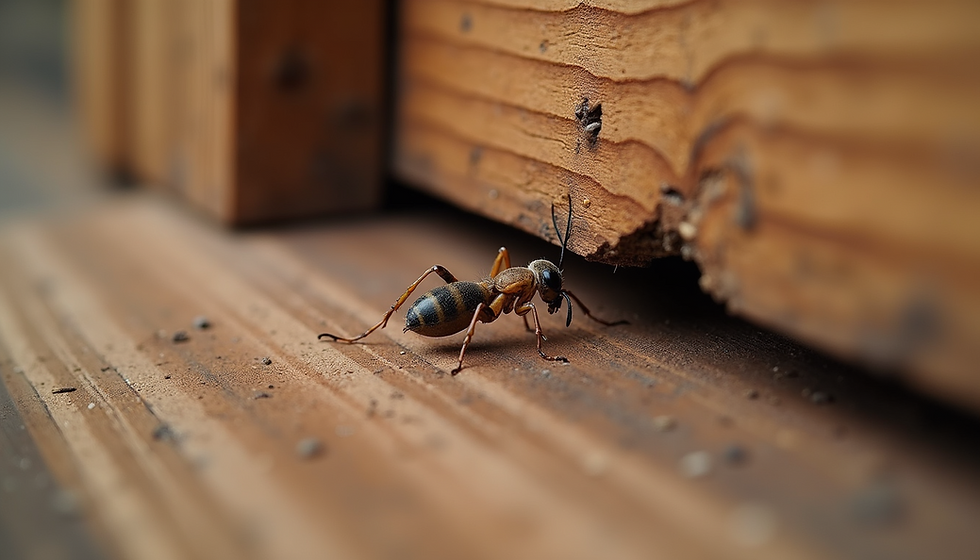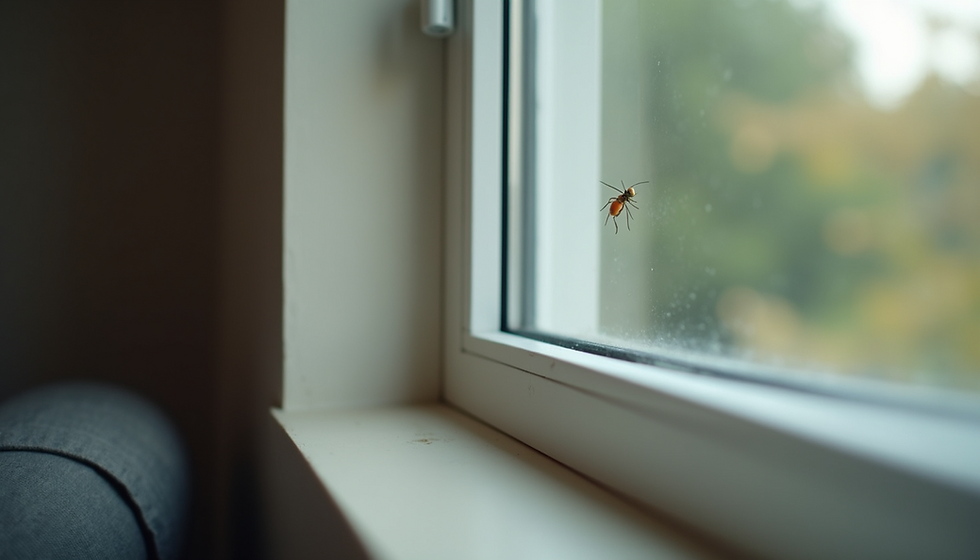How to Spot and Prevent Termite Damage
- Gorilla Pest

- Jul 7
- 3 min read
Termites can be a homeowner's worst nightmare. These tiny pests are notorious for causing significant structural damage to buildings. If you'll forget to spot their presence early or fail to take preventive measures, the costs can be astronomical. In this blog post, we will explore how to spot termite damage and take the necessary steps to prevent it.
Understanding Termite Control
To effectively manage termite infestations, it's essential to first understand what termites are and how they operate. Termites primarily feed on cellulose, which is found in wood, paper, and plant-based materials. In the United States, the most common types of termites are subterranean, drywood, and dampwood termites.
Subterranean termites live underground and form colonies that can number in the millions. They are particularly dangerous because they often go unnoticed until significant damage has occurred. Drywood termites, on the other hand, live inside the wood they consume, which can leave extensive damage that affects wooden structures.
Regular termite inspections and proactive measures are crucial. If you live in an area with high termite activity, hiring professionals for termite control Waco may be the best choice.

Signs of Termite Damage
When it comes to spotting termite damage, early detection is important. Here are some signs to look out for:
Look for Hollow Sounding Wood
Tap on wooden structures throughout your home. If they sound hollow, it's a warning sign that termites may have invaded. Termites consume the internal wood, leaving the outer layer intact, which can make detection tricky.
Swarmers and Discarded Wings
Termite swarmers, or reproductive adults, leave the colony in search of a new nesting location. If you notice small flying insects or discarded wings, especially in the spring, your house could be at risk.

Mud Tubes
Subterranean termites build mud tubes as a protective route to travel above ground. These tubes are usually found along the foundation of your home or inside the walls. If you see pencil-sized tubes made from soil, wood, and saliva, it's time to act.
Termite Droppings
Termite frass, or droppings, can look like small wood pellets. Finding these near wooden structures or in areas of potential infestation is a strong indicator of termite presence.
Inspection Techniques
Regular inspections are critical for early detection. Here’s how to properly inspect your home:
Check Basements and Crawl Spaces
Start in your basement and crawl spaces, where moisture builds up. Look for signs of mud tubes and frass near wooden structures. Dark, damp areas are particularly likely to host termite activity.
Inspect Attics and Roofs
Don’t forget your attic! Conduct inspections of wooden support beams and rafters for signs of damage or droppings. Keep an eye out for moisture, as drywood termites are attracted to areas with high humidity.
Window and Door Frames
Examine window and door frames for signs of peeling paint, hollow sounds, or frass. Even the slightest damage can indicate a potential termite problem.

Prevention Strategies
Preventing termite damage is far better than dealing with an active infestation. Here are some effective strategies:
Maintain Proper Drainage
Ensure that your home has good drainage. Water pooling around the foundation creates an ideal environment for termites. Keep gutters clean and direct downspouts away from your property.
Remove Wood Contact
Avoid letting mulch or wood debris touch the foundation of your home. This includes wooden fences, decks, and firewood stacks. Store firewood at least 20 feet away from your home to minimize the risk.
Seal Entry Points
Termites can sneak into your home through tiny cracks and openings. Repair any holes in the foundation and seal gaps around windows and doors. This simple step can go a long way in keeping them out.
Regular Inspections
Hire professionals to conduct annual termite inspections, especially if you live in a high-risk area. Their trained eyes can catch potential infestations much sooner than average homeowners.
Professional Help Is Key
Sometimes, DIY methods simply aren't enough. In these cases, professional pest control services are crucial. They have the expertise, tools, and products needed to deal with infestations effectively.
A pest control company will start with a thorough inspection and assess your specific needs. They can provide customized treatments and preventative solutions that can protect your home for years to come.
If you are in Waco and facing termite challenges, don't hesitate to reach out for specialized assistance in termite control Waco.
Final Thoughts
Termites pose a serious threat to the integrity of your home. Identifying signs of termite damage early can save you significant time and money. By maintaining your property, practicing good prevention strategies, and scheduling regular inspections, you can significantly reduce the risk of a termite infestation.
Your home should be your sanctuary. Keep it safe from the hidden dangers of termites with awareness and proactive action. Don't wait until it's too late; take control today!


